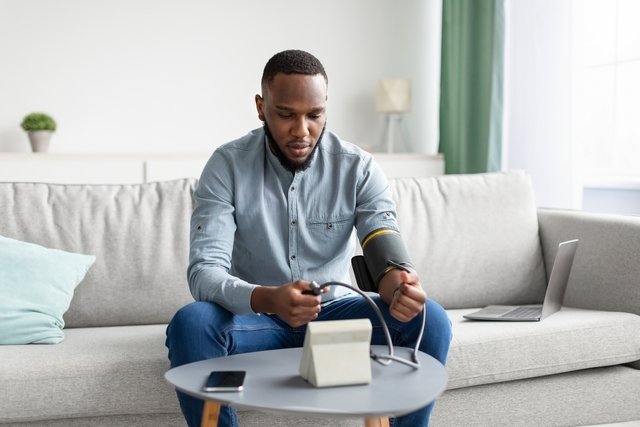The main symptoms of low blood pressure are dizziness, lightheadedness, a racing heart, nausea, vomiting, confusion, drowsiness or even fainting, in the most serious cases.
Blood pressure is considered low when the value is less than 90/60 mmHg. This can occur as a result of very hot environments, getting up too quickly or low fluid intake. Read more about low blood pressure and what can cause it.
Although low blood pressure is not always serious, in case of symptoms it is recommended to consult a cardiologist to check if there is a problem that requires treatment.

Main symptoms
The main symptoms of low blood pressure are:
1. Dizziness
Dizziness is a common symptom when blood pressure starts to drop. It is usually accompanied by other symptoms such as nausea or vomiting. Dizziness happens due to changes in blood flow to the parts of the brain that control balance. Learn more about what can cause dizziness and how to relieve it.
2. Lightheadedness
When blood pressure starts to drop, you may feel light headed due to reduced oxygenation to the brain. This can also make it more difficult to focus on certain tasks.
3. Heart racing
When pressure is low, it is common to feel your heart racing. This nervous system triggers the heart to pump more blood into the vessels in an attempt to compensate for drops in blood pressure.
Also recommended: Fast Heart Rate: 9 Causes & What to Do tuasaude.com/en/fast-heart-rate4. Nausea or vomiting
Nausea or vomiting are symptoms that normally appear when low blood pressure begins to set in. This is a sign that blood flow to certain parts of the brain such as the vestibular system, which helps control the body's balance, is reduced.
Also recommended: Constant Nausea: 14 Common Causes (& What to Do) tuasaude.com/en/constant-nausea5. Weakness or fatigue
Lw blood pressure can also reduce blood flow to the muscles, leading to low oxygen and nutrient levels in these tissues. This can impair muscular function and lead to weakness and tiredness. Learn more about what can cause extreme fatigue and how to treat it.
6. Paleness
Paleness is a common symptom of low blood pressure. It usually happens because when blood pressure drops, the more superficial blood vessels in the skin contract to promote blood circulation to larger, more important vessels in the body.
7. Difficulty concentrating
Difficulty concentrating may be an initial symptom of low blood pressure. This is a sign that areas of the brain that are responsible for attention and memory are not receiving enough oxygen to function adequately.
8. Mental confusion
When blood pressure is very low, oxygen levels can become reduced in the brain, leading to confusion, difficulty reasoning and even not being oriented to person, place or time.
9. Excessive sleep
Excessive sleep can sometimes indicate that blood pressure is too low and is usually the result of reduced blood flow to the brain. This can lead to both drowsiness and further confusion from a lack of sleep.
10. Fainting
Fainting usually happens when blood pressure is severely low and/or drops suddenly, meaning that not enough oxygen is reaching the brain.
How to treat
If you experience symptoms of low blood pressure, you should stop what you are doing and rest in a seated position. If possible, lie down and elevate your legs above heart level until symptoms subside.
Also recommended: How to Raise Blood Pressure: 4 Tips (& Prevention) tuasaude.com/en/how-to-raise-blood-pressureIf symptoms are persist, or if you notice confusion, excessive drowsiness and fainting, you should seek urgent medical care.
